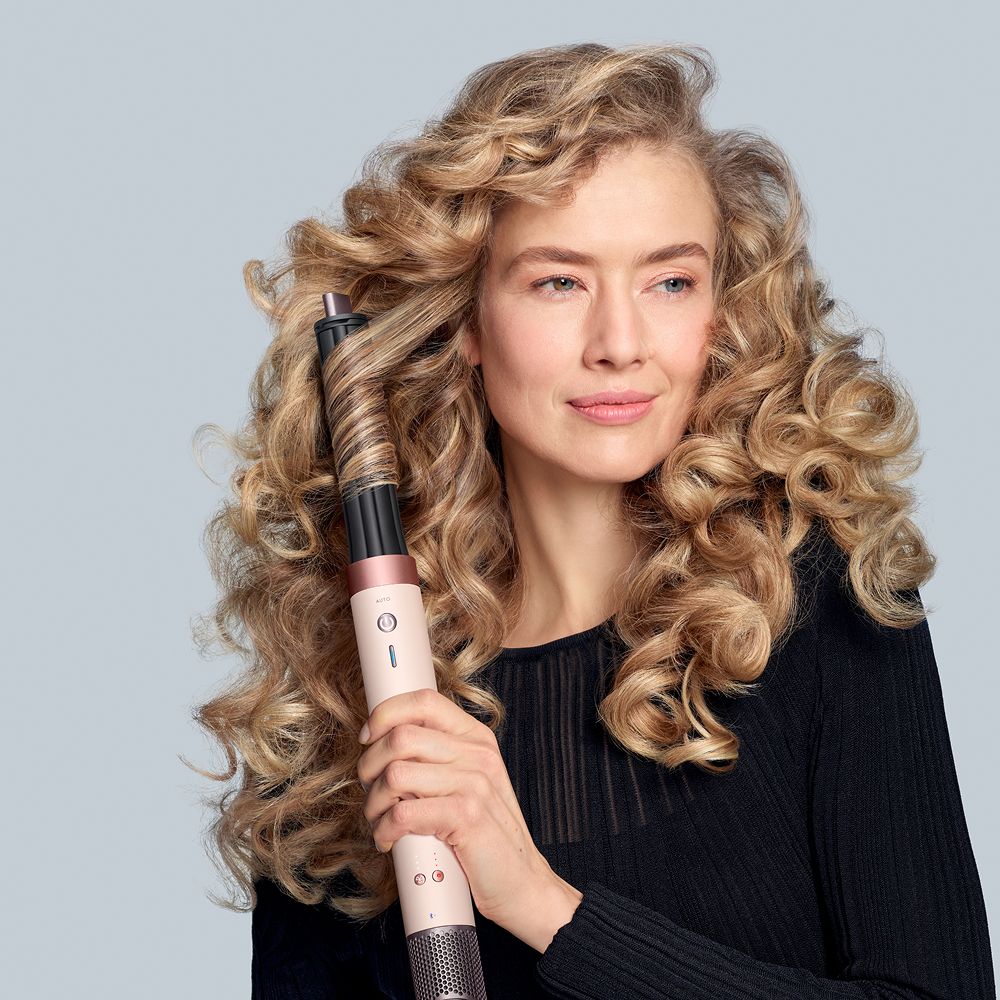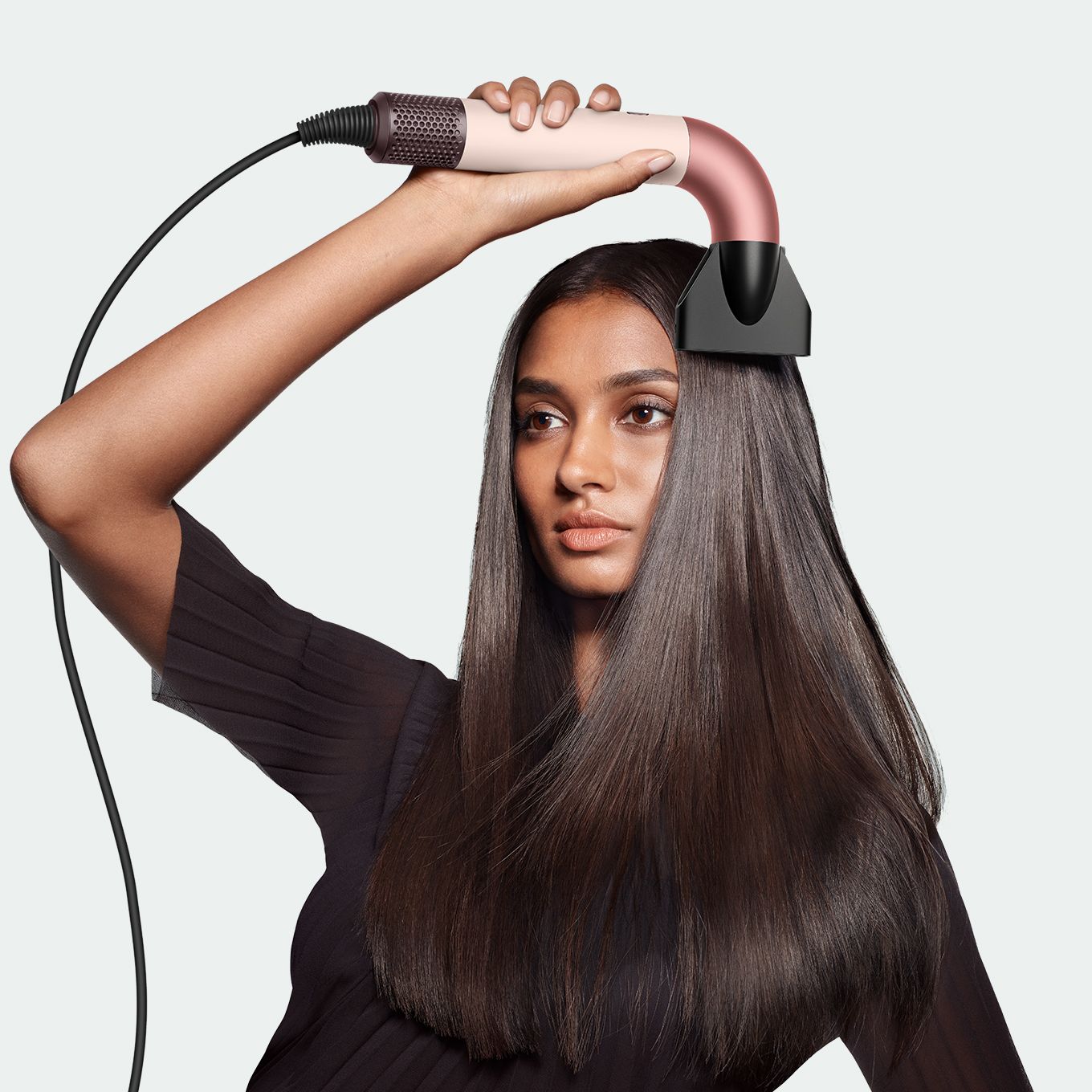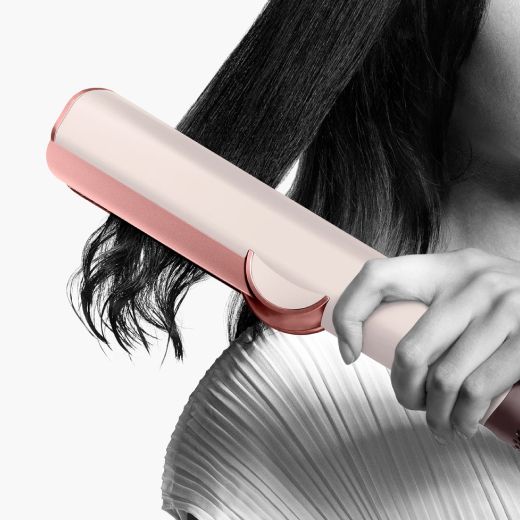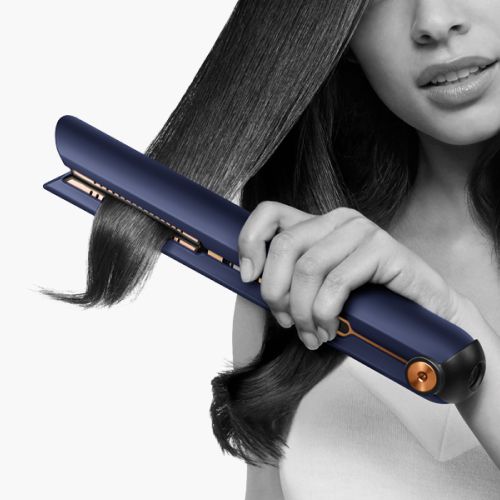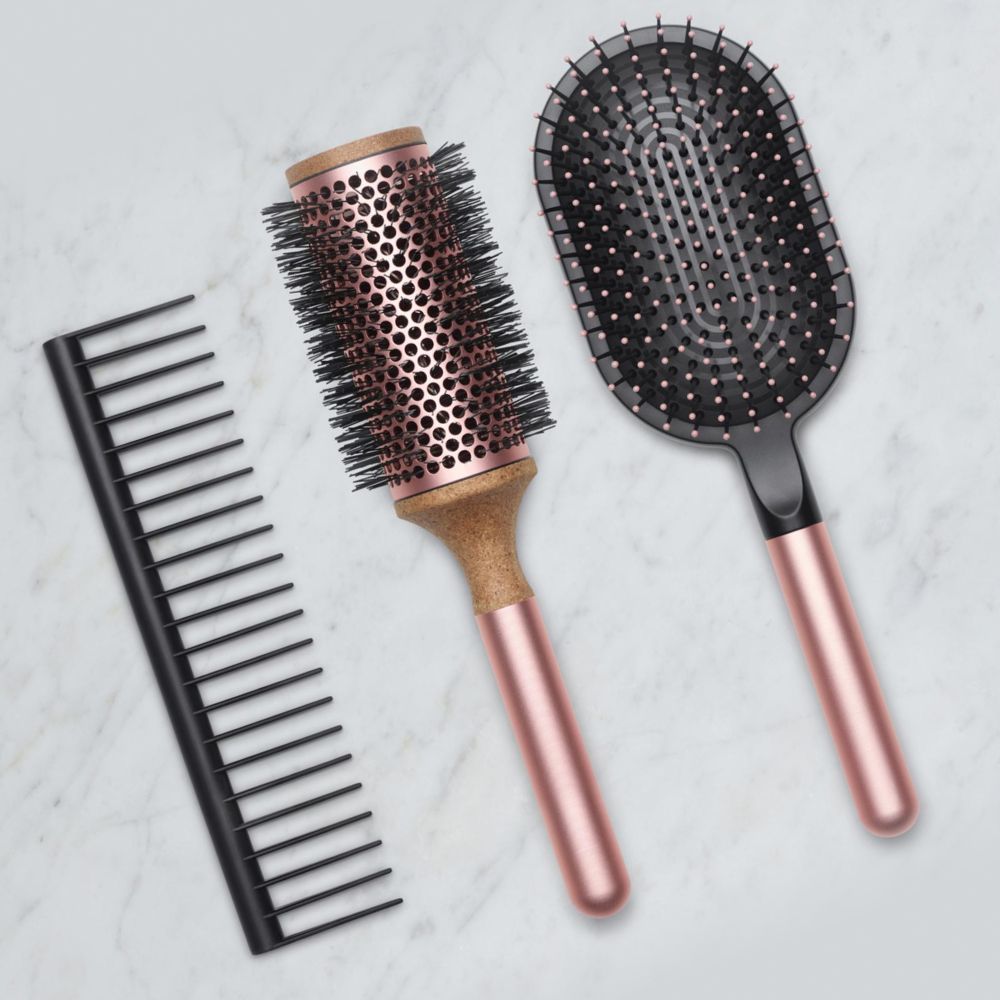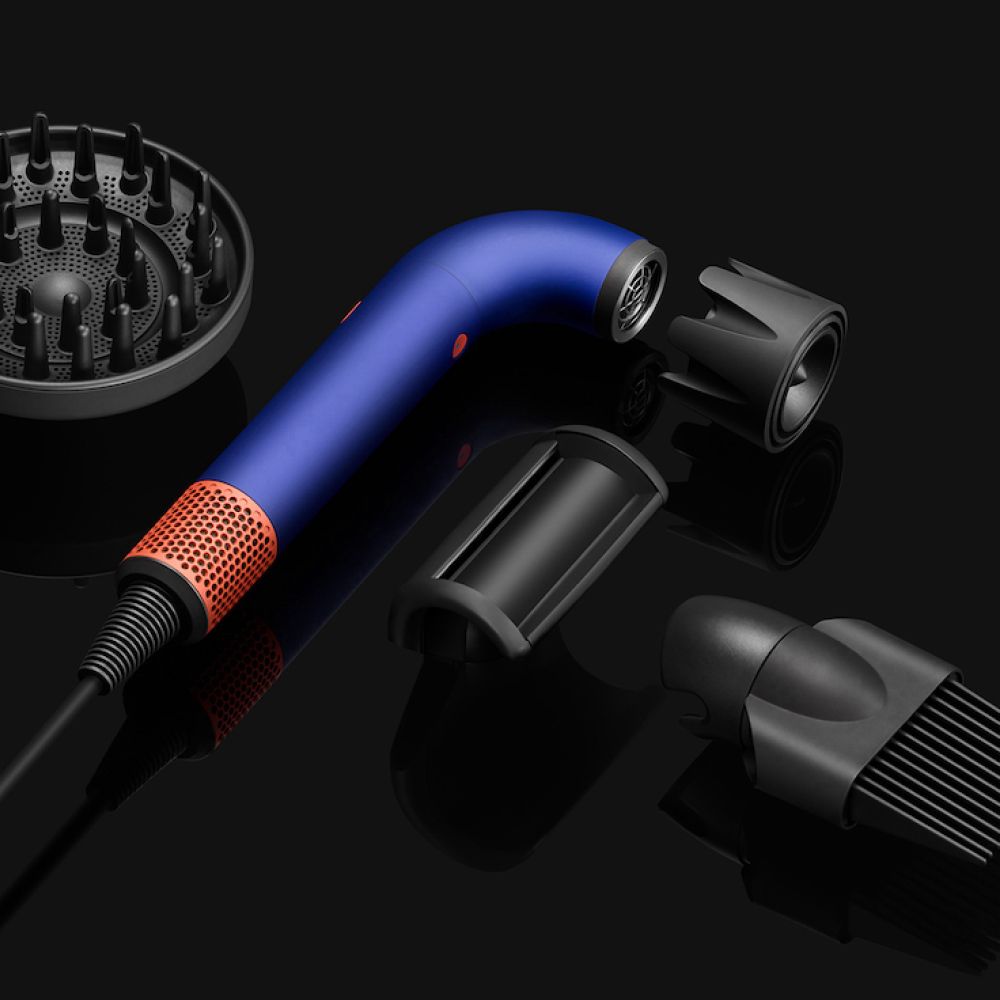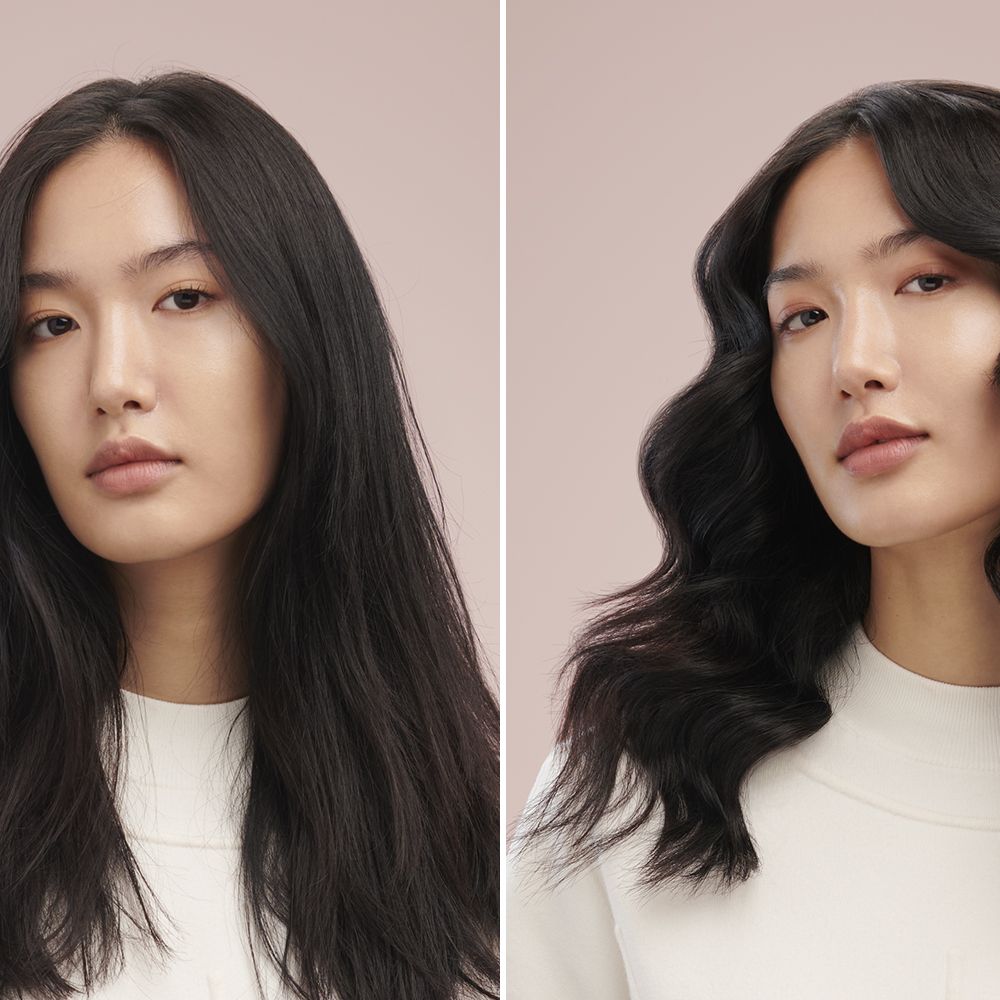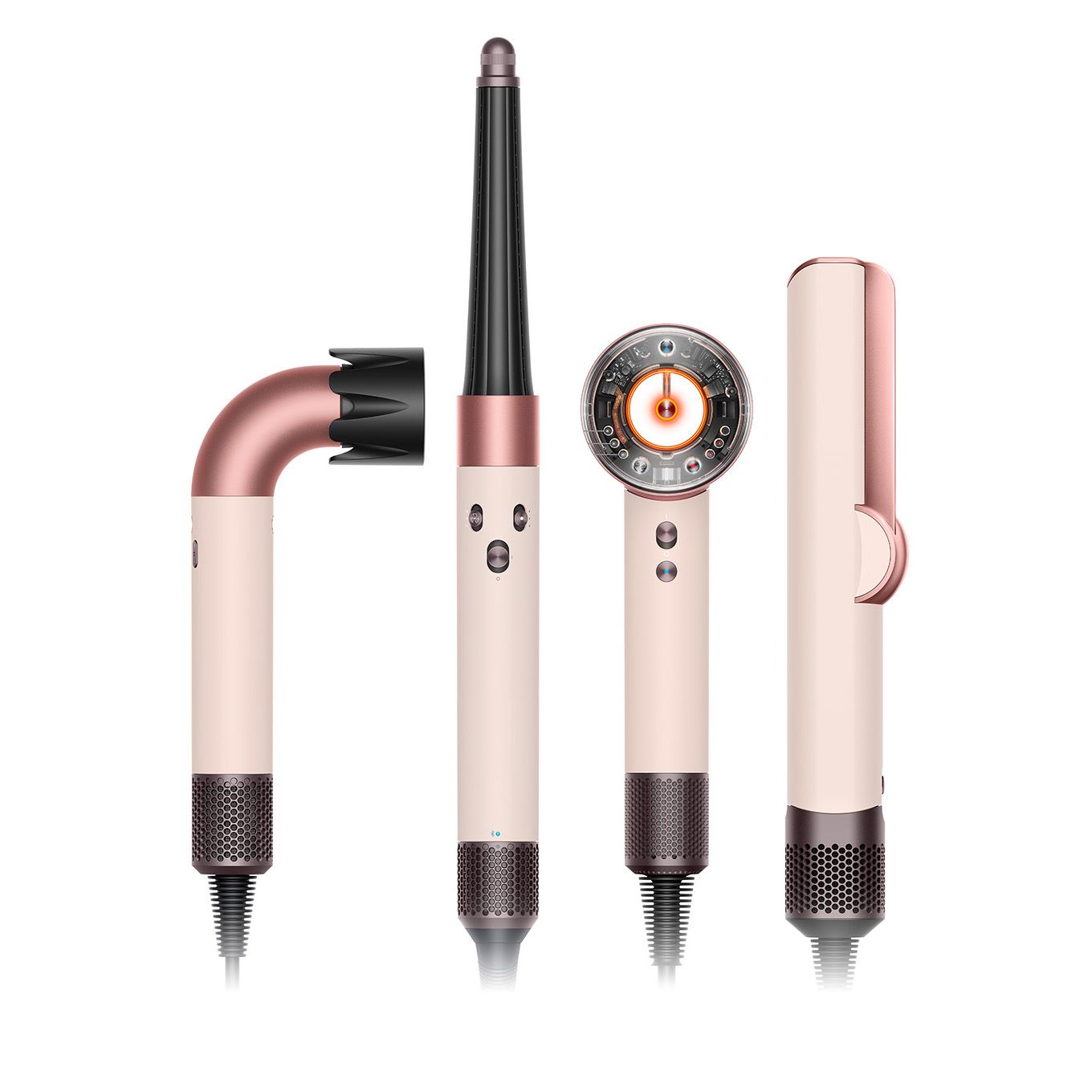Insights | Hair | Science
What hair porosity do you have?
Ever wonder why some products seem to work wonders for others but leave your hair feeling dry or weighed down? The answer might lie in your hair’s porosity and understanding how your hair absorbs and retains moisture is a game-changer—not just for maintaining healthy strands, but for unlocking styling results that actually last.
In this guide, we’ll walk you through how to identify your hair porosity type and what it means for your routine. Plus, discover how Dyson’s hair care devices can help you treat your hair with the care it truly deserves—no matter its texture or type.
-
- What does hair porosity mean?
- What causes low or high hair porosity?
- Is there an easy way to test your hair porosity?
- The characteristics of low porosity hair
- The characteristics of medium porosity hair
- The characteristics of high porosity hair
- Know Your Porosity, Transform Your Routine
- Read More
- Archive
What does hair porosity mean?
Hair porosity refers to your hair's ability to absorb and retain moisture. This characteristic is determined by the condition of the cuticle layer—the outermost protective layer of your hair shaft. Think of the cuticle as overlapping scales that control how moisture and products enter and exit your hair strand.
The three main types of hair porosity are:
Low porosity: Cuticles lie flat and tightly packed, making it difficult for moisture to penetrate the hair shaft. While slow to absorb moisture, low porosity hair tends to retain it well once hydrated.
Medium porosity: Cuticles are slightly raised, allowing balanced moisture absorption and retention. This is considered the ideal porosity type, requiring less intensive maintenance.
High porosity: Cuticles are lifted with gaps between them, allowing moisture to enter quickly but also escape rapidly. This can lead to dry, frizzy hair that's prone to damage.
What causes low or high hair porosity?
Several factors contribute to your hair's porosity level:
Genetics
Your natural hair structure and porosity are largely inherited. Some people are simply born with tightly sealed cuticles (low porosity) or more open cuticles (high porosity).
Heat styling
Excessive heat from traditional styling tools can damage the cuticle layer, raising the scales and increasing porosity. The Dyson Supersonic™ hair dryer helps prevent this with intelligent heat control that measures air temperature over 40 times per second. The Dyson Supersonic Nural™ hair dryer has Scalp protect mode which uses a network of Nural™ sensors, automatically reducing heat as it nears your head, helping protect your scalp from damage.
Chemical treatments
Processes like bleaching, coloring, perming, and relaxing can disrupt the cuticle structure, often resulting in higher porosity. These treatments break down the hair's protein bonds, creating gaps in the cuticle layer.
Environmental exposure
UV rays, pollution, and fluctuating humidity can impact cuticle integrity over time. Protection from these elements helps maintain consistent porosity.
Product buildup
Particularly problematic for low porosity hair, heavy products can accumulate on the hair surface, further preventing moisture penetration and creating an imbalance.
For example, Dyson Airwrap™ multi-styler and dryer helps minimize porosity changes by styling with controlled, lower heat settings and the Coanda effect, reducing the need for extreme temperatures that can damage the cuticle layer.
Is there an easy way to test your hair porosity?
Float test
Take a clean strand of hair and place it in a glass of water. Observe what happens:
- If it floats on top, you likely have low porosity hair
- If it floats in the middle, you have medium porosity
- If it sinks quickly to the bottom, you have high porosity hair
Slip test
Take a strand of hair between your fingers and slide your fingers upward toward the scalp:
- If it feels smooth, you likely have low porosity
- If it feels slightly rough, you have medium porosity
- If it feels very rough or bumpy, you have high porosity
For a more precise assessment, you may consider professional hair analysis, but these home tests can potentially give you a preliminary understanding of your hair's basic porosity type.
The characteristics of low porosity hair
Low porosity hair has tightly packed cuticles that create a barrier to moisture. This hair type:
Repels water initially and takes time to become fully saturated
Tends to have product buildup as formulations sit on the surface rather than absorbing
Dries slowly once wet, as water has difficulty both entering and exiting
Often appears shiny due to the smooth, flat cuticle surface
May be resistant to chemical treatments and colour
Styling considerations for low porosity hair
Use lightweight, water-based products that won't create buildup
Apply products to damp hair to enhance absorption
Consider gentle heat to temporarily lift the cuticle for better product penetration
The Dyson Corrale™ straightener works well for low porosity hair as its intelligent heat control and flexible plates gather hair evenly, requiring less reliance on heat while still achieving effective styling. This controlled approach helps prevent raising the cuticle excessively, maintaining the hair's natural porosity level.
The characteristics of medium porosity hair
Medium porosity represents the ideal balance, with cuticles that are neither too tight nor too open. This hair type:
Absorbs moisture at a moderate rate
Retains moisture well without excessive dryness or greasiness
Holds styles effectively and for a reasonable duration
Accepts chemical treatments predictably
Requires less intensive maintenance routines
Styling considerations for medium porosity hair:
- Use balanced moisture-protein products to maintain optimal hair health
- Apply moderate heat settings when styling
- Focus on maintenance rather than correction
The Dyson Supersonic™ hair dryer with its precise heat control is particularly beneficial for medium porosity hair, helping maintain this ideal porosity balance by preventing heat damage that could disrupt the structure.
The characteristics of high porosity hair
High porosity hair has raised or damaged cuticles with gaps that allow rapid moisture movement. This hair type:
Absorbs water and products quickly
Dries rapidly as moisture escapes easily
Tends to feel dry, frizzy, or brittle
Is prone to tangling and breakage
May appear dull due to light scattering from the uneven cuticle surface
Styling considerations for high porosity hair:
- Use richer, heavier products that can seal the cuticle
- Apply leave-in conditioners and oils to lock in moisture. The Dyson Omega™ nourishing collection provides heat protection up to 450°F.
- Minimize heat exposure to prevent further cuticle damage
Seasonal adjustments for different porosity types
Hair porosity needs can fluctuate with changing seasons, requiring adjustments to your care routine:
Winter care:
- Low porosity: Deep condition with a hydrating mask
- Medium porosity: Add slightly richer products to prevent moisture loss
- High porosity: Incorporate deep conditioning treatments and protective styling to combat dryness
Summer care:
- Low porosity: Use lightweight, humidity-resistant products to prevent buildup
- Medium porosity: Apply UV-protective products to maintain cuticle integrity
- High porosity: Use anti-humidity sealants and moisture-locking oils to prevent frizz
Know Your Porosity, Transform Your Routine
Understanding your hair porosity isn’t just a nice-to-know detail—it’s the foundation of a hair care routine that actually works for you. Whether your strands resist moisture or soak it up like a sponge, tailoring your products, tools, and techniques to your porosity level can make the difference between frustrating hair days and consistently healthy, manageable hair.
Once you’ve identified whether your hair is low, medium, or high porosity, you can start making smarter decisions: choosing ingredients that nourish rather than sit on the surface, selecting tools that protect rather than damage, and adapting your routine with the seasons to meet your hair where it is.
And remember—Dyson’s intelligent heat control technology is more than just a feature. It’s a way to respect your hair’s structure while still achieving salon-level results at home. From the Supersonic™ to the Corrale™ and Airwrap™, these tools work with your hair’s unique porosity—not against it.
So, what porosity do you have? Once you know, you’re no longer guessing. You’re working with your hair—not fighting it. And that’s the kind of confidence that starts from the root.
Read more
-
Insights | Hair | Hair science
-
Insights | Hair | Science
-
Insights | Hair | Styles
Discover Dyson
Disclaimer
The information provided in this article is not intended as a product claim. Refer to individual Dyson models for specific capture claims.
The contents of dyson.com, such as text, graphics, images, and other materials created by Dyson or obtained from Dyson licensors, and other materials contained on the Dyson.com Site (collectively, "Content") are for informational purposes only. The Content is not intended to be a substitute for professional medical advice, diagnosis, or treatment. Always seek the advice of your physician or other qualified health provider with any questions you may have regarding a medical condition. Never disregard professional medical advice or delay in seeking it because of something you read on the Dyson.com Site!
Dyson does not recommend or endorse any specific tests, physicians, products, procedures, opinions, or other information that may be mentioned on the Site. Reliance on any information provided by Dyson, Dyson employees, others appearing on the Site at the invitation of Dyson, or other visitors to the Site is solely at your own risk.
Press contacts
-
USA
Emails us at USPR@Dyson.com
1330 West Fulton Street, 5th Floor, Chicago IL, 60607
-
Social media
- Twitter: @dyson
- YouTube: youtube.com/dyson
- Facebook: facebook.com/dyson
- Instagram: @Dyson
- Instagram: @dysonbeauty
- LinkedIn: Dyson
- Pinterest: Dyson Technology



